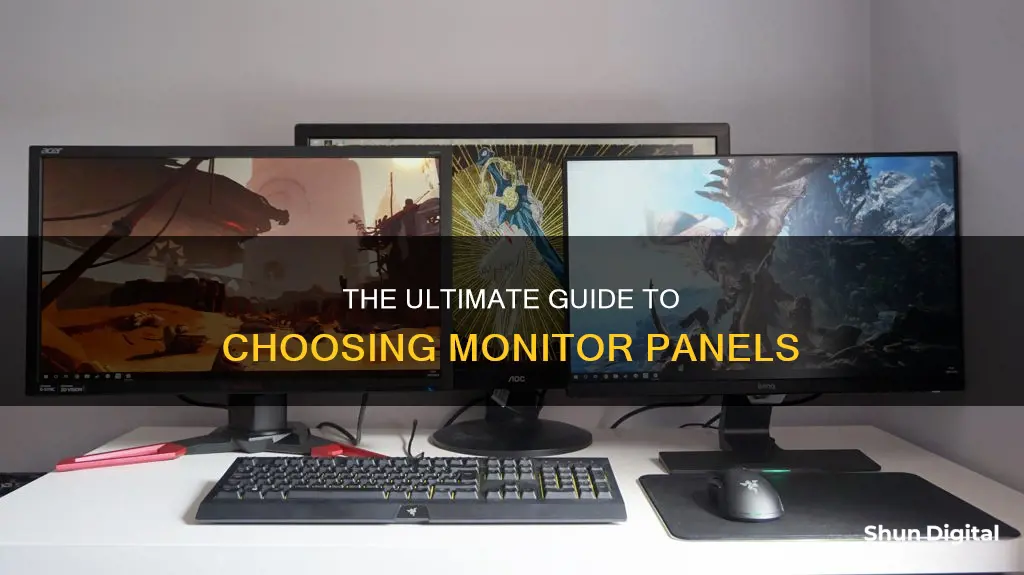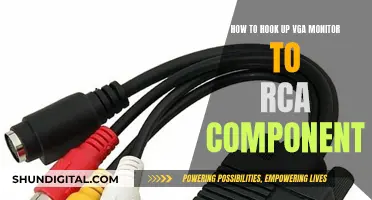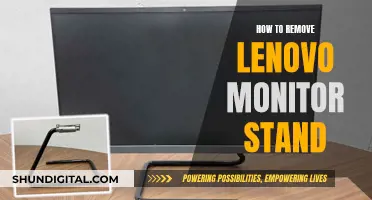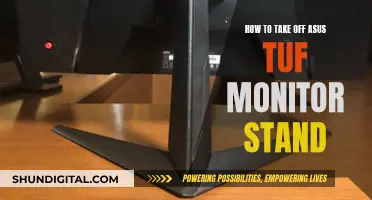
When it comes to choosing a monitor panel, there are several types to choose from, each with its own unique advantages and disadvantages. The most common types are twisted nematic (TN), in-plane switching (IPS), vertical alignment (VA), and organic light-emitting diode (OLED). TN panels are typically the most affordable and offer fast response times and high refresh rates, making them a popular choice for gamers. However, they tend to have poor colour accuracy and narrow viewing angles. IPS panels, on the other hand, are known for their wide viewing angles and accurate colour reproduction, but they tend to have slower response times. VA panels offer high contrast ratios and deep blacks, making them ideal for media that requires deep blacks, but they may suffer from colour shifting when viewed at extreme angles. OLED panels are the newest technology, where each pixel emits its own light, allowing for excellent contrast and colour accuracy. However, they tend to be more expensive and susceptible to burn-in. Ultimately, the best panel type for you will depend on your specific needs and budget.
| Characteristics | Values |
|---|---|
| Panel Types | TN, VA, IPS, OLED, QD-OLED |
| Image Quality | Depends on the panel type |
| Viewing Angles | IPS: 178/178; VA: 178/178; TN: 170/160 |
| Response Time | TN: 1ms; VA: 2-3ms; IPS: 4ms; OLED: 1ms |
| Refresh Rate | TN: 144Hz; VA: 200Hz; IPS: 165Hz; OLED: 240Hz |
| Resolution | Depends on the monitor |
| Cost | TN: cheapest; VA: mid-range; IPS, OLED: expensive |
| Usage | TN: gaming; VA: all-round; IPS: graphics, photography; OLED: gaming, graphics |
What You'll Learn
- Twisted Nematic (TN) panels are the fastest and cheapest option, but have poor colour accuracy and narrow viewing angles
- In-Plane Switching (IPS) panels have wide viewing angles and accurate colour reproduction, but are more expensive and have slower response times
- Vertical Alignment (VA) panels are a good middle ground, with high contrast ratios and deep blacks, but they have slower response times than TN panels
- Organic Light-Emitting Diode (OLED) panels are the newest and most expensive, with excellent image quality and fast response times, but are susceptible to burn-in
- Mini-LED panels are newer, more expensive, and offer better contrast and brightness than LCD monitors

Twisted Nematic (TN) panels are the fastest and cheapest option, but have poor colour accuracy and narrow viewing angles
Twisted Nematic (TN) panels are a type of LED (a form of LCD) panel display technology. They are the fastest and cheapest option among the other main types of display panels, VA (Vertical Alignment) and IPS (In-Plane Switching). TN panels are great for gaming monitors and laptops because of their high refresh rates and minimal motion blur.
However, TN panels have the worst viewing angles and colour accuracy when compared to VA and IPS panels. They offer poor colour reproduction and limited viewing angles, with colours shifting and potentially inverting when viewed at an angle that is not perpendicular to the display. This means that TN panels are not ideal for tasks requiring precise colour representation, such as graphic design, photo editing, or video production.
TN panels are also not the best option for those seeking a high-quality multimedia experience, as they cannot produce deep blacks due to their reliance on polarizing filters to block light. This results in low contrast and limited brightness, affecting the overall image quality.
Despite their drawbacks, TN panels remain a popular choice for gaming due to their fast response times and affordable price point.
Troubleshooting Arcade1Up Monitor: Is It Busted?
You may want to see also

In-Plane Switching (IPS) panels have wide viewing angles and accurate colour reproduction, but are more expensive and have slower response times
When shopping for a monitor, you may come across the term IPS, which stands for in-plane switching. This is a type of LED (a form of LCD) display panel technology. IPS panels are known for their excellent colour accuracy and wide viewing angles, making them ideal for artists, photographers, and video editors. They are also suitable for tasks that require precise colour representation, such as graphic design or photo editing.
IPS panels offer the best viewing angles of any LCD monitor type. They also produce more varied and richer colours than other types of panels. This is because, in an IPS panel, the crystals are aligned horizontally and rotate in-plane when voltage is applied, allowing light to pass through and an image to be displayed on-screen. This technology was designed to improve upon early twisted nematic (TN) models that suffered from poor viewing angles and colour reproduction.
While IPS panels offer great image quality, they are more expensive to manufacture and are therefore pricier than other types of panels. They also tend to have slower response times, which can be a drawback for gamers or anyone looking for a monitor with super-fast response times. IPS panels may also use more power than other panel technologies.
IPS panels are a great choice for anyone who prioritises colour accuracy and wide viewing angles. However, if you are a gamer or require faster response times, you may want to consider a TN panel instead.
Deltek's Internet Monitoring: What You Need to Know
You may want to see also

Vertical Alignment (VA) panels are a good middle ground, with high contrast ratios and deep blacks, but they have slower response times than TN panels
Vertical Alignment (VA) panels are a good middle ground when it comes to choosing a monitor. VA panels offer a balance between image quality and performance, making them suitable for a wide range of users.
One of the key advantages of VA panels is their high contrast ratios and deep blacks. This means that VA panels can display darker colours and deeper blacks than some other panel types, such as Twisted Nematic (TN) panels. The improved black levels are due to the dual-polarizer approach used in VA panels, which helps to block out more light when displaying black, resulting in better contrast. This makes VA panels ideal for watching movies or other media that require deep blacks, as well as for displaying HDR (High Dynamic Range) content.
In terms of viewing angles, VA panels offer wider viewing angles than TN panels, with 178/178 viewing angles commonly achieved. This means that VA panels can provide clear views from almost any angle, making them suitable for shared viewing experiences.
While VA panels have improved in terms of response times, they are still generally slower than TN panels. VA panels typically have response times of around 2-5ms, which is faster than In-Plane Switching (IPS) panels but slower than TN panels. This can make VA panels less ideal for fast-paced gaming or action-packed movies, as there may be some motion blur or ghosting. However, VA panels have improved significantly in recent years and can now perform nearly as well as TN panels in terms of response times and refresh rates, with some VA panels reaching 200Hz refresh rates.
VA panels are commonly found in LCD TVs, but they are also available for monitors. They are often more affordable than IPS panels while still offering good colour reproduction and improved viewing angles compared to TN panels.
Monitoring Sprint Hot Spot Usage: A Comprehensive Guide
You may want to see also

Organic Light-Emitting Diode (OLED) panels are the newest and most expensive, with excellent image quality and fast response times, but are susceptible to burn-in
When it comes to monitor panel types, Organic Light-Emitting Diode (OLED) panels stand out as the newest and most advanced option on the market. OLED panels offer a host of benefits that elevate them above other types of displays.
One of the defining characteristics of OLED technology is its ability to deliver perfect blacks. Unlike other display types that rely on a backlight, OLED panels emit their own light. This means that each pixel can be turned on or off individually, resulting in true black levels and higher contrast. When combined with bright whites, this creates a vibrant and immersive viewing experience.
OLED panels also excel in terms of image quality and colour accuracy. They offer a wider colour range, improved brightness, and superior viewing angles compared to other panel types. This makes them ideal not just for entertainment but also for tasks that require precise colour representation, such as graphic design and photo editing.
In addition, OLED panels have extremely fast response times, making them a top choice for gamers. With refresh rates as low as 0.001ms, they are around 1,000 times faster than standard LED-backlit LCD panels. This responsiveness, along with their thin form factor, lightweight design, and energy efficiency, makes OLED panels highly desirable for those seeking a premium viewing and user experience.
However, one of the drawbacks of OLED technology is its susceptibility to burn-in. Burn-in occurs when an image or sequence is displayed continuously for extended periods, leaving a permanent mark on the panel. While this is not a common issue for home users, it is something to consider if the monitor will be left on for long uninterrupted periods.
Despite this potential disadvantage, OLED panels represent the future of display technology. They are becoming increasingly popular, with manufacturers such as LG, Samsung, Sony, and Panasonic offering OLED TVs and other devices. While OLED panels are currently more expensive than other options, the price gap is narrowing, making this technology more accessible to consumers.
Opening LG Flatron LCD Monitors: A Step-by-Step Guide
You may want to see also

Mini-LED panels are newer, more expensive, and offer better contrast and brightness than LCD monitors
When it comes to choosing a monitor, there are various factors to consider, such as screen size, resolution, refresh rate, panel type, connectivity options, and intended use. The panel type is a crucial aspect, as it determines the technology used to produce the images displayed on the screen.
Mini-LED panels are a newer technology in the display market and are considered an upgraded version of traditional LCD screens. They offer enhanced visual experiences with improved contrast and more expressive pictures. Mini-LEDs achieve this by utilising an array of miniature LEDs as the backlight source, allowing for more precise local dimming and superior contrast ratios compared to LCD monitors. This results in deeper blacks and brighter highlights, creating a more immersive viewing experience. The ability to control the brightness of specific areas on the screen is a significant advantage of Mini-LED technology.
In comparison to LCD panels, Mini-LEDs provide a higher level of brightness and contrast, making them ideal for well-lit environments or when using HDR (High Dynamic Range) content. The increased number of LEDs also reduces the size of the local dimming zones, resulting in an improved viewing experience for users. Additionally, Mini-LEDs have a faster response time, making them a preferred choice for gamers or those seeking a high-performance monitor.
However, Mini-LED panels come at a higher cost due to the complex manufacturing process of integrating a large number of miniaturised LEDs. This technology also has design constraints, particularly for portable devices like smartphones and tablets, as the Mini-LED arrays can be thicker and more power-hungry than traditional LCD panels.
In summary, Mini-LED panels offer improved contrast, brightness, and local dimming capabilities compared to LCD monitors. They provide a more immersive viewing experience and are ideal for applications where image quality is paramount. However, the higher cost and design limitations of Mini-LED technology are important considerations when deciding between the two types of panels.
Understanding LCD Monitor White Dots: Causes and Fixes
You may want to see also
Frequently asked questions
The most common types of monitor panels are twisted nematic (TN), in-plane switching (IPS), vertical alignment (VA), and organic light-emitting diode (OLED). TN panels are typically the fastest and cheapest, while IPS panels offer better colour accuracy and viewing angles. VA panels provide the best contrast and image depth, and OLED panels are known for their superior colour accuracy, viewing angles, and energy efficiency.
TN panels offer very fast response times and high refresh rates, making them a popular choice for gaming monitors. However, they often suffer from poor colour reproduction and limited viewing angles, which can make them unsuitable for colour-critical work or media viewing.
IPS panels offer excellent colour accuracy and wide viewing angles, making them ideal for tasks that require precise colour representation, such as graphic design and photo editing. They also have slightly faster response times than VA panels. However, IPS panels tend to be more expensive than TN and VA panels, and they may suffer from lower contrast and issues with dark scenes.
VA panels provide the best contrast and image depth, making them ideal for multimedia professionals who need accurate colours and deep blacks. They also offer good brightness levels and are now available with high refresh rates. However, VA panels used to have slower response times, and they are more expensive than TN panels.







